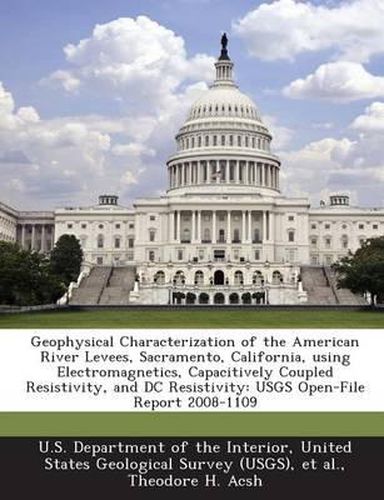Readings Newsletter
Become a Readings Member to make your shopping experience even easier.
Sign in or sign up for free!
You’re not far away from qualifying for FREE standard shipping within Australia
You’ve qualified for FREE standard shipping within Australia
The cart is loading…






A geophysical characterization of a portion of American River levees in Sacramento, California was conducted in May, 2007. Targets of interest included the distribution and thickness of sand lenses that underlie the levees and the depth to a clay unit that underlies the sand. The concern is that the erosion of these sand lenses can lead to levee failure in highly populated areas of Sacramento. DC resistivity (Geometric’s OhmMapper and Advanced Geosciences, Inc.‘s SuperSting R8 systems) and electromagnetic surveys (Geophex’s GEM-2) were conducted over a 6 mile length of the levee on roads and bicycle and horse trails. 2-D inversions were conducted on all the geophysical data. The OhmMapper and SuperSting surveys produced consistent inversion results that delineated potential sand and clay units. GEM-2 apparent resistivity data were consistent with the DC inversion results. However, the GEM-2 data could not be inverted due to low electromagnetic response levels, high ambient electromagnetic noise, and large system drifts. While this would not be as large a problem in conductive terrains, it is a problem for a small induction number electromagnetic profiling system such as the GEM-2 in a resistive terrain (the sand lenses). An integrated interpretation of the geophysical data acquired in this investigation is presented in this report that includes delineation of those areas consisting of predominantly sand and those areas consisting predominantly of clay. In general, along most of this part of the American River levee system, sand lenses are located closest to the river and clay deposits are located further away from the river. The interpreted thicknesses of the detected sand deposits are variable and range from 10 ft up to 60 ft. Thus, despite issues with the GEM-2 inversion, this geophysical investigation successfully delineated sand lenses and clay deposits along the American River levee system and the approximate depths to underlying clay zones. The results of thi
$9.00 standard shipping within Australia
FREE standard shipping within Australia for orders over $100.00
Express & International shipping calculated at checkout
A geophysical characterization of a portion of American River levees in Sacramento, California was conducted in May, 2007. Targets of interest included the distribution and thickness of sand lenses that underlie the levees and the depth to a clay unit that underlies the sand. The concern is that the erosion of these sand lenses can lead to levee failure in highly populated areas of Sacramento. DC resistivity (Geometric’s OhmMapper and Advanced Geosciences, Inc.‘s SuperSting R8 systems) and electromagnetic surveys (Geophex’s GEM-2) were conducted over a 6 mile length of the levee on roads and bicycle and horse trails. 2-D inversions were conducted on all the geophysical data. The OhmMapper and SuperSting surveys produced consistent inversion results that delineated potential sand and clay units. GEM-2 apparent resistivity data were consistent with the DC inversion results. However, the GEM-2 data could not be inverted due to low electromagnetic response levels, high ambient electromagnetic noise, and large system drifts. While this would not be as large a problem in conductive terrains, it is a problem for a small induction number electromagnetic profiling system such as the GEM-2 in a resistive terrain (the sand lenses). An integrated interpretation of the geophysical data acquired in this investigation is presented in this report that includes delineation of those areas consisting of predominantly sand and those areas consisting predominantly of clay. In general, along most of this part of the American River levee system, sand lenses are located closest to the river and clay deposits are located further away from the river. The interpreted thicknesses of the detected sand deposits are variable and range from 10 ft up to 60 ft. Thus, despite issues with the GEM-2 inversion, this geophysical investigation successfully delineated sand lenses and clay deposits along the American River levee system and the approximate depths to underlying clay zones. The results of thi